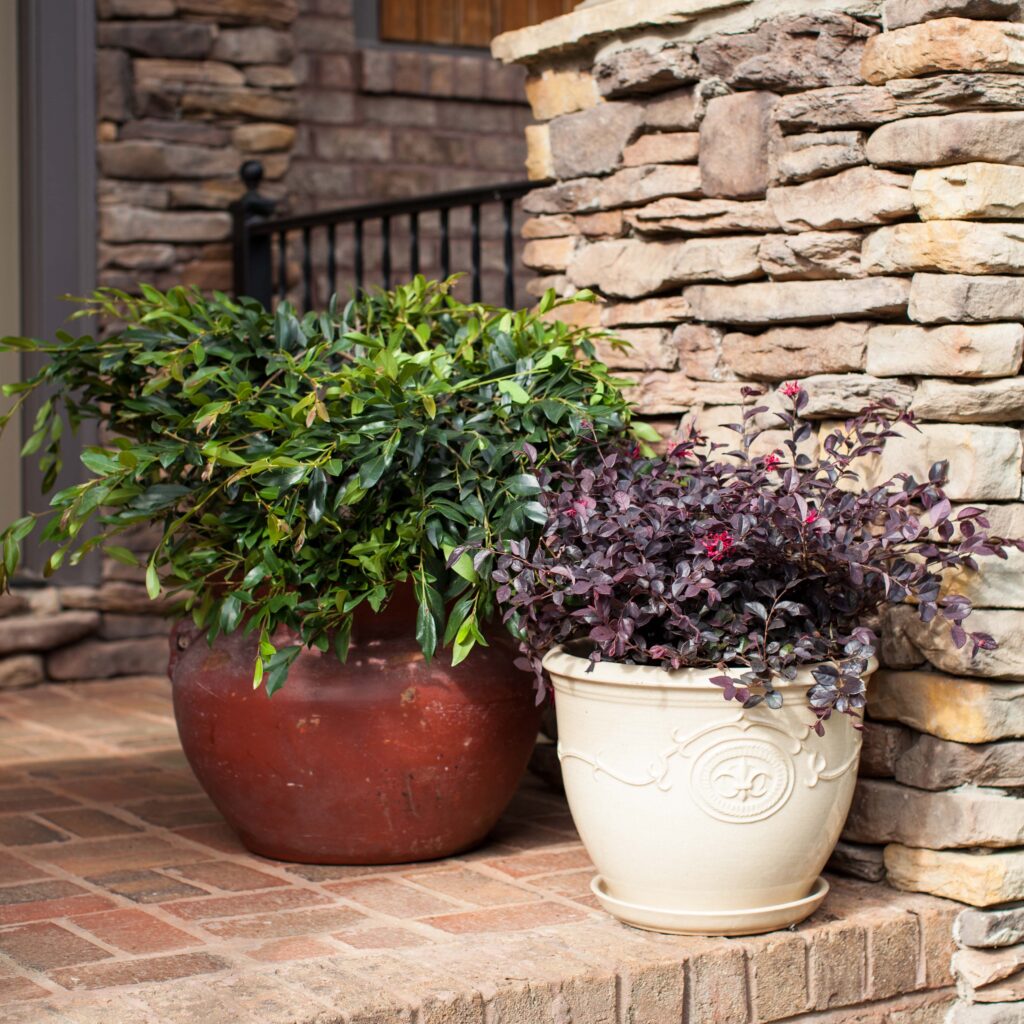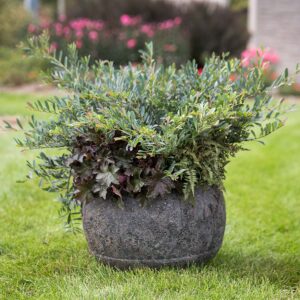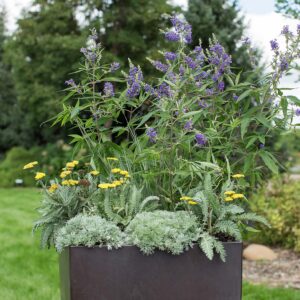So, you have your favorite First Editions® plants in decorative containers, and they’re looking gorgeous. But winter is right around the corner, and you’re wondering if there’s anything you can do to keep them alive during the winter months. The answer is yes! Container plants need a little extra care to ensure their survival throughout the cold winter months, but it’s nothing you can’t handle. Follow along as we break down the best tips and practices for overwintering container plants.

Unlike plants in the landscape that have vast amounts of soil providing winter insulation and protection, all that stands in the way of the cold temps for your container plantings are potting mix and a container. So, it’s up to you to give them some added protection. We suggest moving your containers into an unheated protected space once they’ve gone dormant in the fall. A three-season porch or garage will do the trick. If the container is in a spot protected from the wind, you live in a climate that doesn’t see considerable fluctuations in temperature, and the plants in the container are rated for your hardiness zone, your containers should do just fine.
Late fall is a great time for transplanting container plants into the ground. If you choose this route, make sure to watch our how-to on transplanting before. However, if you want to keep your plants in their containers, there are a few options.
Plants do need a little water to help them along in the winter months. Water your containers once a month using about a snowball’s worth of water. If you live in a climate where it snows, feel free to actually gather a snowball and place it at the base of the plant. Water them at mid-day when the temperature is the warmest, so the water has a chance to soak in before the cooler evening temps.
If you live in a warmer climate, you should still water your containers once a month. Typically zones 7-11 don’t experience the same temperature fluctuations that cold climates do. Therefore, if you live in those zones, you might not have to follow the same steps like mulching or adding insulation to protect your container plants. If you’re unsure and want specific advice in your area, check with your local extension office or send a message to @firsteditionsshrubstrees on social, and we’ll be happy to help!
Fertilizer promotes new growth and that new growth is more tender to the cold temperatures that come with winter. So, make sure you don’t apply fertilizer to your containers in the winter. A general rule is to stop fertilizing by August and to start it up again in the spring.


For the gardeners who want the easiest route, treat your containers like you would annuals: discard and start fresh next year! By doing so, you won’t have to worry about following overwintering tips, and you’ll be able to have something new, fresh, and exciting each spring.